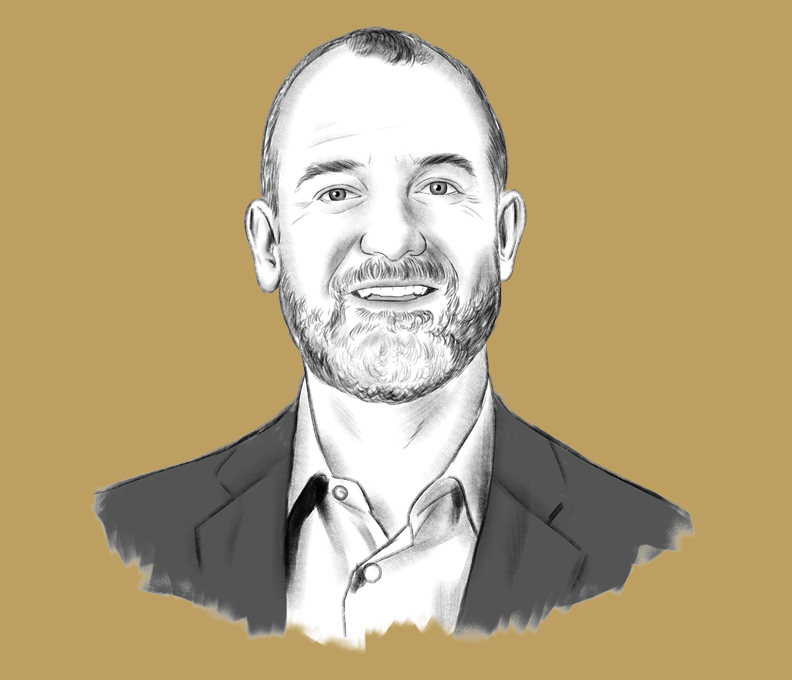Privately Run Boutique Lifestyle Hotels Are Gaining Popularity
Now, big hospitality chains are jumping on the growing trend
by Boyd Farrow
July 17, 2023

Pool deck at NoMad Las Vegas / Photo: Courtesy of Sydell Group
Post-pandemic, travelers are keener than ever on hotels that promise authenticity and adventure. So it’s hardly a surprise that lifestyle boutiques are driving the leisure hospitality market. And it’s even less of a surprise that the big chains are aggressively trying to own that space.
The supply of “soft-brand” properties—industry-speak for affiliations between independent properties and large chains—had already increased 19 percent over the past decade, according to a recent report. But in 2023, these mating urges are enough to make your average Tinder user blush. In the last few months alone, Accor has launched its Handwritten Collection, Marriott has announced an expansion of its Design Hotels, and Hyatt has acquired Mr & Mrs Smith, a booking platform for luxe boutiques that aligns well with the company’s overall strategy. Yet according to some of the world’s most idiosyncratic and influential lifestyle hoteliers, when it comes to growth, might is not always right.
Neighborhood Vibe
He might have bought Billy Joel’s Miami home, but Andrew Zobler is really the Elton John of the hospitality business—famous for his extravagant lifestyle hotels and his equally colorful feuds. Though he lost his original NoMad hotel in Manhattan after a high-profile spat with Ron Burkle, his ex-partner in New York’s Sydell Group, Zobler has kept the NoMad brand, which he has taken to London, and is planning imprints in Vienna, Copenhagen, Nashville and (again) New York.
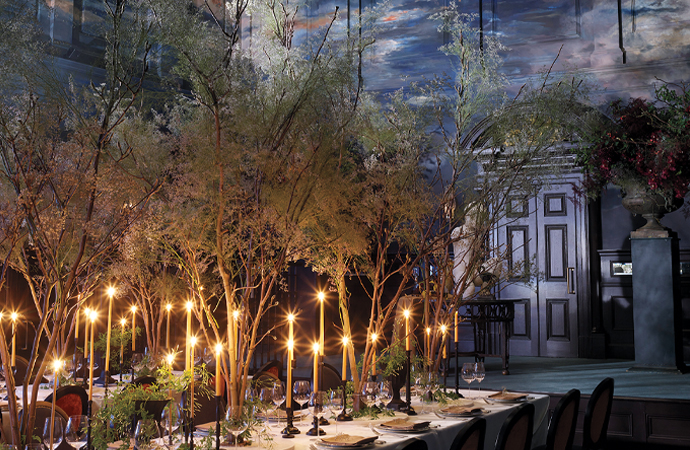
Magistrates’ Ballroom at NoMad London / Photo: Courtesy of Sydell Group
Meanwhile, following investment from MGM Resorts, Sydell has opened a NoMad inside the Park MGM in Las Vegas—a concept likely to replicated at other MGM resorts—and a NoMad-branded residential property in Miami is in the works. And then there’s the side hustle. Zobler also has grand plans to roll out Penny, the “art-centric hotel-meets-student-residence” in New York’s Williamsburg, named after his pet Chihuahua.
“With me, brands come about when we find an incredible spot or a particular building and it goes from there,” he says. “It’s about having an opportunity to become a part of an interesting neighborhood. It’s not just opening another hotel to make money.
“People use the term ‘lifestyle’ very loosely,” Zobler continues. “To me, it implies a group of individuals that have certain things in common. The more corporate a place becomes, the more the culture and identity that made it compelling in the first place will disappear.”
According to him, it is particularly hard for upscale brands to get lifestyle hotels right. “The problem for almost all these operators is that they have a set of minimums—every guest room must be a certain number of square feet, say, or each property must have particular facilities. The eventual cost of all this excludes many of the types of people necessary to make the place special.
“A truly luxurious lifestyle hotel has to offer some less expensive rooms to attract a younger, more diverse crowd,” he adds. “No one wants to go to a bar or pool area and see only people who look like themselves.”
Zobler is known for his fastidiousness, collaborating with architects, designers and restaurateurs to create theatrically opulent spaces, while drawing on local influences. The NoMad London—a jewelry box of rich textiles, deep furniture, black-paneled walls and avant-garde touches set around a three-story Edwardian atrium—is more baroque than its neighbor the Royal Opera House.
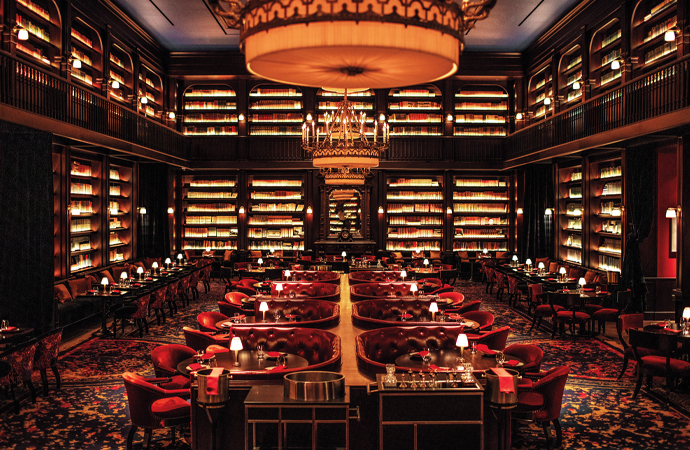
NoMad Restaurant at NoMad Las Vegas / Photo: Courtesy of Sydell Group
Unlike most lifestyle hotels, where the eateries and bars are separate operations, restaurants are integral to the NoMad aesthetic. “It’s risky but the thinking is that every time someone visits the restaurant, they have a premium experience that reminds them of the hotel, and vice versa.”
Currently, Zobler is contemplating how to transport this experience into the coworking sphere. “This is obviously a huge opportunity as leisure and business travel blur further, so we’re trying out something different with the two properties we’re developing in New York,” he says. “But coworking doesn’t just mean people tapping on laptops. It could mean a recording studio or a studio to paint or create something. It could be a place where commuters keep storage lockers. We’re looking at several configurations.” He is also mulling the various membership models favored by a growing number of people in the hospitality sector, including Soho House founder Nick Jones, who now co-owns the original NoMad hotel—relaunched as The Ned NoMad hotel and club—with Burkle.
“Soho House is very clever but most clubs will ultimately fail. There has to be a genuine community and camaraderie and a real culture. Members of wellness clubs, say, may have nothing in common, apart from the fact they like getting massages,” he says.
As far as NoMad clubs go, for now Zobler is keeping things close to the chest. “One thing’s for sure: Whatever we do has a point of view,” he says. “It won’t be for everyone, but the people who love it will really, really love it.”
Armchair Revolutionary
Firmdale Hotels is widely credited for reinventing the upscale boutique hotel, giving the overstuffed sofas and choreographed coffee tables of the English town house a candy-colored makeover, and adding even bolder artworks, breezy eateries, cushy cinemas—even bowling alleys. Yet perhaps the most eccentric thing about the 38-year-old British company is its business strategy. Husband-and-wife team Tim and Kit Kemp have rebuffed multiple offers from hospitality giants to take their brand global, choosing to focus on London and New York because both cities are “a collection of villages” where the pair enjoy hanging out.

The Crosby Bar at Crosby Street Hotel, New York City, a Firmdale Hotels property / Photo: Courtesy of Firmdale Hotels
“The pleasure for us comes from finding these ‘impossible’ sites and turning them into living properties, rather than simply owning a huge, far-flung portfolio,” explains Kit Kemp, a self-taught designer who oversees every aspect of Firmdale’s look and feel. It took three years, she notes, to transform a dingy parking lot in New York’s SoHo into the light-filled Crosby Street Hotel. An even more ambitious project saw a horseshoe-shaped scrap of land behind London’s Piccadilly Circus—untouched since the Blitz during World War II—metamorphose into Ham Yard Hotel, a plush escape set around a tree-filled garden.
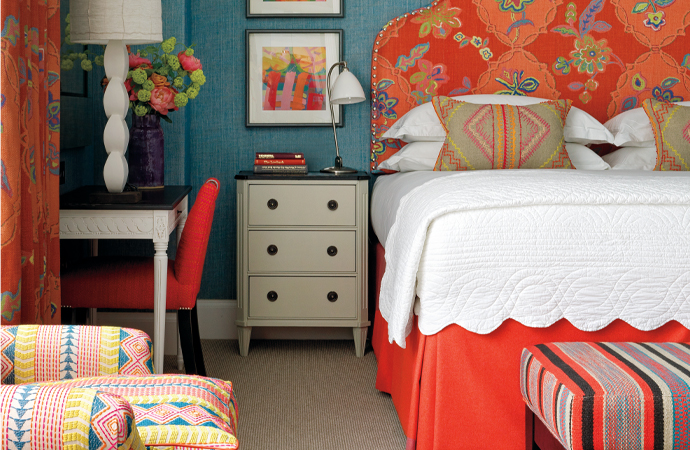
Guest room at Ham Yard Hotel, London, a Firmdale Hotels property / Photo: Courtesy of Firmdale Hotels
“If we opened hotels all over the world, they would start to look the same, and, well, corporate,” she says. “So many people in this business start off with an idea and somehow the more venture capital they raise, the cheaper the final offering looks. Anyway, we’re never going to be global because that would mean we wouldn’t know everyone working in our hotels.”
Firmdale has eight hotels in central London and two in New York, with one more in the pipeline in each city. The next stateside hotel is set to open in TriBeCa next spring. Although none are branded as Firmdale properties, all are filled with company’s signature array of patterns, textures and conversation pieces in Alice in Wonderland hues.
According to Kit Kemp, this sense of tumbling down a rabbit hole is very much part of the appeal. “As a guest, you should want to open every door and find something original, whether it is a painting or a piece of furniture. Every time the lift doors open, you see a different color scheme.”
Often the changes happen right in front of visitors’ eyes. “We are always polishing what we do and literally moving artworks and furniture around as the properties evolve,” she says. “Our regulars are used to seeing ladders in corridors.”
While the hotels provide a living design lab, they also serve as a showroom for the growing collections of wallpapers, furniture and furnishings marketed under the Kit Kemp Design Studio label. These exclusive small-batch lines include collaborations with several homeware heavyweights, the latest being a collection of tableware and glassware for Spode.
“Unlike many lifestyle brands, we’ve never tried to be fashionable, which has helped as it has meant we’ve never been unfashionable,” Kemp says. “And because we’ve always been interested in crafts and handmade items, our properties have avoided becoming overdesigned, which can date hotels very quickly. I like it if guests ask, ‘Where did that object come from?’ or even, ‘What exactly is that?’”
Dutch Master
With two hotel brands, several new properties and a members club in the works, Bram Van Der Hoek, CEO of Amsterdam-headquartered Sircle Collection, is more convinced than ever of the value of keeping his company independent. “During the Covid lockdowns, we had a lot of time to take stock of where the industry’s heading, and because we’re not owned by a corporation we could be incredibly flexible,” he says. “When there are not layers of people to be consulted, you can move quickly.”
Van Der Hoek’s instincts have been honed since 1990, when he interned at the storied Park Centraal Amsterdam. After various leadership roles at Starwood Hotels & Resorts, he returned in 2011 as general manager of the hotel, which became the first in Sircle’s rapidly growing portfolio.
Today the company is best known for its Sir brand—hip hotels aimed at creative nomads, with properties in Amsterdam, Hamburg, Berlin, Ibiza, Barcelona and, soon, Vienna and Milan. All are fashionably fitted out in smoky colors, with public spaces garnished with retro knickknacks and paving-slab-sized art books.

Lounge at Sir Nikolai, Hamburg, Germany / Photo: Courtesy of Steve Herud
They differ from other lifestyle hotels, says Van Der Hoek, because exploring neighborhoods with a crew of affiliated “hosts” is as much a part of the guest experience as the moody lighting and vinyl playlists. At Sir Nikolai in Hamburg, for instance, one can loll on a leather couch or learn to make something out of leather at a nearby atelier.
“All chains say they want their hotels to connect with their local community, but we really are involved. Our hosts are people we hang out with on weekends. This makes visitors feel like they are spending time with insiders in some really cool places.”
Locations can help, too. The Sir Adam in Amsterdam shares space in the landmark A’DAM Tower with Sony and local creative outfits SemiFest and MassiveMusic. “We were taking a chance, because you can only reach the hotel by ferry,” says Van Der Hoek. “But some intrepid visitors find that very appealing.”
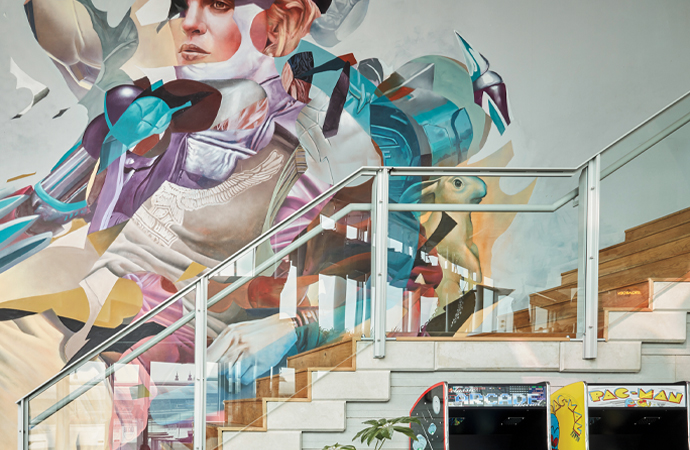
Social space at Sir Adam, Amsterdam / Photo: Courtesy of Sircle Collection
In addition, high-profile restaurants such as Momo and Izakaya—operated by Sircle’s sister outfit Entourage Group—bring in local scenesters seeking high-end Asian fusion. This fall, the company will open its first Sircle-branded hotel in East London, heralding the arrival of a more upscale tier of properties. A second is set for Milan’s iconic Torre Velasca skyscraper. Inhabitants of both cities can join The Cover, the private club that Sircle recently debuted in Barcelona. Members receive access to a spa, coworking spaces and event programming.
“We want to double our footprint in three to five years, but how we do that depends on what opportunities arise,” says Van Der Hoek. Another new brand, Àterre, dreamed up during the pandemic, will open in Rotterdam next year, offering a mix of rooms by the night and apartments with preordered groceries by the month.
For an independent company, Van Der Hoek says managing growth is a delicate affair. “The closer hotels are to each other, the more economical the footprint. But we need to keep adding countries to introduce guests to all the properties.” He says membership in the Sircle Club, which unlocks discounts and perks, gently encourages upgrades and further exploration.
His personal challenge, he says, is to resist micromanaging. “Each new project feels like my baby but as Sircle Collection has grown, I’ve had to learn to delegate. The good thing, though, is that if colleagues learn through their mistakes, it ultimately leads to a better company.”
Big Brand on Campus
From the astronaut-shaped lamps in the Graduate Cincinnati guest rooms to the old canoes repurposed as lobby lights in the Graduate Madison, many of the properties in this college-themed hotel chain are straight out of a Wes Anderson movie. Yet some of the finer retro details—such as the 144 vintage Nike posters in Graduate Eugene, nicknamed TrackTown USA, or the wall of National Geographic covers at Graduate Berkeley, which match UC Berkeley’s exact shade of yellow—make Anderson’s work look pretty slapdash.
According to Ben Weprin, the man behind the Graduate brand, not only did the design team find inspiration for the Graduate Palo Alto, near Stanford, in vintage photos and postcards found inside the original 1930s building, but they also interviewed students and alumni to try to recreate their memories. Graduate is the first brand from Weprin’s Adventurous Journeys Capital Partners, a Nashville, Tennessee-based company that revives undervalued real estate by spotting new niches.
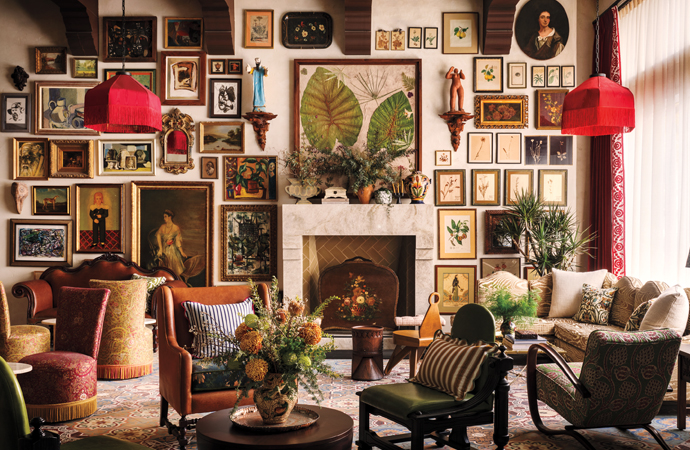
Graduate Palo Alto, California / Photo: Courtesy of AJCP
“We identified an untapped market in university towns, particularly parents, alumni and friends emotionally connected to these places,” says Weprin. “Of course, many of these towns are culturally significant and have great architecture, which is why they attract visitors all year round.”

Lobby at Graduate Madison, Wisconsin / Photo: Courtesy of AJCP
In less than ten years, more than 30 Graduate hotels have opened in the U.S. and two overseas, in Cambridge and Oxford, England. “While location is certainly a primary factor, there isn’t a template for us to put one in any college town. Each hotel has a bespoke design that wouldn’t resonate anywhere else, plus a strong cultural relevance within its community and beyond.”
Being an independent company gives Adventurous Journeys complete control of every facet of each project. “We handle everything in-house,” he says, “from the concept and development to design and branding and everything in between.” Moreover, bringing all aspects of the investment process under the one tent means faster execution. “I’m really proud of how quickly we’ve expanded yet stayed true to our mission of telling stories through handcrafted properties,” says Weprin, who became hooked on the idea of building creative experiences in niche markets after visiting his mentor Larry Levy’s Esperanza resort in Cabo San Lucas.
“We are not creating cookie-cutter properties. Strictly speaking, we’re not even in the hotel business. Our goal is to continue to evolve, whether that is restoring a historic mansion in Nashville or a golf destination in Scotland.”
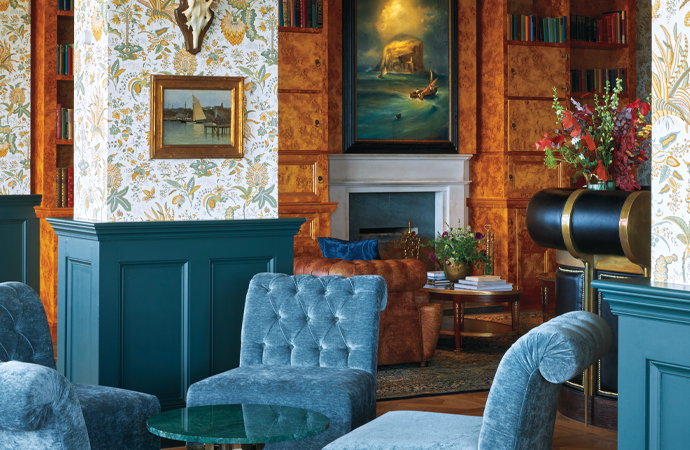
Lobby at Rusacks St. Andrews, Scotland, a Marine & Lawn property / Photo: Courtesy of AJCP
The Scottish golf coasts have been in Weprin’s thoughts of late. In 2021, he launched another brand, Marine & Lawn, a cluster of upscale hotels and resorts from St. Andrews to Troon. It has partnered with White Rabbit Projects, the developer of several successful U.K. food and drink concepts, in the venture, which aims to upgrade the golfing weekend for a younger clientele.
This dovetails with Field & Stream Lodge Co., another outdoorsy brand he launched in January with Starwood Capital. The plan is create “modern and affordable lifestyle lodgings” inspired by the iconic U.S. magazine throughout America. Several locations are lined up, a mix of new-builds and renovations, with the first openings set for next year.
“The opportunity for adventure is everywhere, whether that is a golf getaway or a hiking trip,” Weprin says. “Outdoor experiences don’t have to be remote, exotic or expensive in order to be authentic and invigorating, and both these new platforms grew out of that belief.”
He has plenty of other brands on the drawing board, too. “We’re always musing here. It’s really important that we pay attention to what’s happening around us while making sure we’re honoring the past,” Weprin says. “Historic architecture, bespoke travel, creative backdrops—these all inspire us, and that is the direction we’re going to keep going in.”
